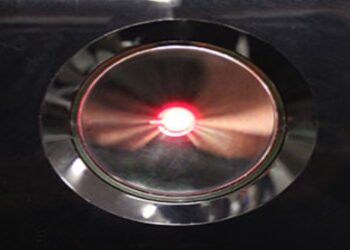When Uninstall Goes Rogue: Your Guide to Forcefully Removing Stubborn Programs
Have you ever faced a program that won’t uninstall? It feels like a stubborn guest, refusing to leave. You click “uninstall,” but it stays put. There’s no need to worry! This guide helps you evict problematic software with the right strategies.
I. General Troubleshooting Methods: The First Line of Defense
Before resorting to harsher tactics, let’s try gentle fixes first. These tools help persuade programs to leave without force.
- Task Manager Takedown: If the program still runs, get the Task Manager (Ctrl + Alt + Delete). Find the program, choose it, and click “End task.” That should remind it to go.
- Control Panel Charm Offensive: Open Control Panel (search for it). Go to “Programs” and select “Uninstall a Program.” Find your target in the list, select it, and click “Uninstall.” This should activate the program’s uninstaller.
- Reinstallation Gambit: It may sound odd but reinstalling the program and then trying to uninstall can sometimes reset stubborn uninstallations. It reminds the program of its exit.
- The Reboot Ritual: A simple restart often fixes glitches blocking your uninstall. Just turn it off and on again. Sometimes this helps resolve issues.
- Process Elimination Protocol: Ensure the app is not running at all. Close any sneaky processes to allow a clean uninstall. (Look below for specific instructions).
- Safe Mode Sanctuary: Booting into Safe Mode loads only essential components. This might help you uninstall a troublesome program without conflicts. Check your device manual for how to enter Safe Mode.
- Microsoft’s Troubleshooter to the Rescue: Use Microsoft’s Program Install and Uninstall Troubleshooter. Download it and let it diagnose issues related to software removal. This tool fixes many common uninstall problems.
These methods are your first options. They work for programs being a bit too prickly. For the really tough ones, let’s move to platform-specific tactics as removal methods differ based on your system.
II. Platform-Specific Instructions: Tailoring the Eviction Notice
Operating systems differ in their software removal techniques. Here’s a detailed guide for Android, Windows, and iOS on how to uninstall programs effectively.
A. Android: App-solute Removal
Android boasts numerous apps, making removal usually simple, but tough cases exist.
- Settings App Demolition: Start by opening “Settings.” Tap “Apps & notifications,” then “See all apps.” Find your app and tap “Uninstall.” Usually straightforward, but not always.
- Google Play Store Purge: Another option is to open the Google Play Store app. Click on your Profile icon (top right), go to “Manage apps & devices,” select the app, then hit “Uninstall.” It’s similar to deleting a contact.
- Force Stop and Data Wipe: For really stubborn apps, go to “Settings,” find “Apps,” and locate the app. Tap “Force Stop,” then access “Storage” and choose “Clear Cache” and “Clear Data.” This can help eliminate resistance.
- Uninstall Updates First: If updates caused problems, in app settings (Settings > Apps > [App Name]), find “Uninstall updates.” Tap it, then try uninstalling the app again. It can simplify the process.
- Disabling System Apps: For system apps that resist removal, go to Settings > Apps, select the app, then tap “Disable.” It won’t uninstall but stops it from running.
B. Windows: Winding Down Windows Programs
Windows offers several methods for program removal with different program responses.
- Control Panel Command: To start, type “Control Panel” in the taskbar search and select it. Navigate to “Programs” > “Programs and Features.” Right-click the program and choose “Uninstall.” Follow prompts accordingly.
- Installation Directory Dive: If the program does not appear in Control Panel, check its installation folder in “Program Files” or “Program Files (x86)” on your C: drive. Look for an uninstaller file like “uninstall.exe” and run it.
- Reinstall and Uninstall Redux (Windows Edition): Reinstalling on Windows and then using the native uninstaller may fix broken uninstall processes. It’s worth trying if other methods fail.
- CMD to the Rescue (WMIC): For a command line approach, open Command Prompt as an administrator (search “cmd,” right-click and select “Run as administrator”). Run wmic product get name to list installed programs. Use: wmic product where name=”[Program Name]” call uninstall /nointeractive for removal (replace accordingly).
C. iOS (iPhone/iPad): iEviction
On iOS, removing apps is typically straightforward, aligning with Apple’s user-focused design.
- Home Screen Homicide (App Icon Method): Hold the app icon until it jiggles. Tap the “Remove” icon (the “X”). Confirm by clicking “Delete App.” It’s a simple and effective method.
- Settings App Sanction: Alternatively, go to Settings > General > iPhone Storage (or iPad Storage). Locate the app, tap it, then choose “Delete App.” This method helps manage storage effectively.
- Content & Privacy Restrictions Check: If deletion issues arise, check Screen Time settings under Settings > Screen Time > Content & Privacy Restrictions > iTunes & App Store Purchases > Deleting Apps to ensure it’s allowed.
- Home Screen “X” Revisited: Just as a reminder: Press and hold the app icon until it wiggles, then tap the “X” to delete it. Simplicity often leads to success.
III. Force Uninstalling via Command Prompt: The Digital Sledgehammer
If gentler methods fail, Command Prompt can be a powerful tool for uninstalling stubborn software remnants.
- Folder Demolition (rmdir): To remove a complete program folder via Command Prompt, open it as an administrator. Execute: rmdir /s /q PATH/TO/FOLDER (with the correct path). Be cautious: This action is irreversible. Verify before confirming. The /s switch handles subdirectories and files; /q runs quietly without prompts.
- File Attribute Manipulation (attrib) and Deletion (del): For files resistive due to attributes like “system” or “hidden,” open Command Prompt as administrator. Use attrib -s -h -r /s /d *.* to remove restrictive attributes from files in the directory.
- Within the current directory and its subdirectories, use the del command to delete files, e.g., del /F /Q /A. The /F option forces deletion of read-only files. The /Q option enters quiet mode. The /A option selects files with any attributes.
- Specific File Deletion (del): To delete a single stubborn file, use: Del /F /Q /A (replace “” with the full path to the file). Ensure you’re deleting the correct file.
Command Prompt uninstall methods can cause system damage. They are powerful tools. Use with caution. Only use when other methods fail.
IV. Using Third-Party Uninstaller Tools: The Specialized Eviction Squad
Sometimes, you need specialists. Third-party uninstaller tools serve as thorough and forceful alternatives. They offer “forced uninstall” modes and registry cleaning. They help remove all traces of a program.
- Revo Uninstaller Pro: A popular uninstaller with a “forced uninstall” feature for stubborn programs. It scans for remnants after the initial uninstall. The tool removes registry entries and leftover files. Revo Uninstaller Pro is paid but has a free trial.
- Wise Program Uninstaller: A free uninstaller that includes a “forced uninstall” mode. It aims for quick and complete uninstallation, with a simple interface and effective leftovers scanning. Wise Program Uninstaller is a solid free option.
- IObit Uninstaller: Highly rated and often considered one of the best free options. IObit Uninstaller offers deep scanning capabilities to remove remnants thoroughly. Its “powerful scan” matches premium uninstallers.
Third-party uninstallers automate the force uninstall process, especially for damaged installations. They save time and effort compared to manual methods.
V. Dealing with Undeletable Files/Folders: The Digital Blockade Runners
Encountering undeletable files or folders is common. Understanding why files become undeletable is essential for overcoming these blockades.
- Reasons for Undeletable Files:
- File in Use: A program or process actively uses the file, locking it and preventing deletion.
- Corrupted File: A damaged file system sometimes makes files undeletable.
- System Restrictions: Operating systems protect certain files to maintain stability.
- Permissions Issues: Lack of permissions prevents deletion for files owned by different accounts or processes.
- Solutions for Undeletable Files:
- Close Programs and Processes: Check Task Manager to ensure no programs are using the file.
- Safe Mode Deletion (Again!): Booting into Safe Mode bypasses file locks and allows deletion of in-use files.
- Command Prompt DEL Command (Revisited): Using DEL /F /Q /A can often force deletion of locked or protected files.
- Renaming and Replacing Trick: Rename the undeletable file. Then create a new file with the original name. Overwrite the original renamed file with the new empty one. This method sometimes allows deletion.
Undeletable files often signal a running process or file system issues. Systematic troubleshooting and tools like Command Prompt or Safe Mode usually resolve these issues.
VI. Removing Remnants After Uninstall: The Digital Cleanup Crew
Programs can leave behind digital footprints even after a successful uninstall. These remnants can clutter your system. Cleaning them up is essential.
- Program Files and AppData Folder Check: Manually check these folders for leftover program folders. Type %programfiles% and %appdata% in the search bar. Look for folders of the uninstalled program and delete them if found.
- Registry Editor Dive (regedit): For the technically inclined and cautious. Open Registry Editor (search “regedit”). Navigate to HKEY_LOCAL_MACHINESoftwareMicrosoftWindowsCurrentVersionUninstall. In the left pane, examine installed programs represented by long keys. If you find one for the uninstalled program, right-click and select “Delete.” Warning: Incorrect registry edits can damage your system.
Removing remnants ensures a clean uninstall and helps maintain performance. Manual removal can be tedious, but third-party uninstallers often automate this process.
VII. Special Cases: Navigating Uninstalling Nuances
The world of software uninstallation isn’t always straightforward. There are special cases and nuances to consider in multi-user environments and corrupted files.
- Multi-User Uninstall Limitations: Uninstalling a program only removes it for the logged-in user on multi-user systems. To uninstall for all users, log in as an administrator or use specific administrative tools.
- Bloatware Battles: Bloatware is often unwanted pre-installed software that clutters your system. To remove bloatware:
- Identify Bloatware: Look for apps you didn’t install, especially pre-installed ones from manufacturers.
- Uninstall or Disable: Go to Settings > Apps, select the app, and try to “Uninstall.” If unavailable, look for “Disable” to stop it from running.
- Corrupted or Unreadable Files: Command Prompt force deletion methods are effective for corrupted files. Sometimes reinstalling the program can resolve issues caused by installation file corruption.
- Missing Uninstallers: If there’s no uninstaller in Control Panel, check the program’s installation folder for an uninstall.exe file.
Special cases need specific approaches. Understand limitations of standard methods to manage software effectively.
VIII. Important Considerations: Uninstalling Wisely
Force uninstalling programs should be done carefully. Here are important considerations to remember.
- Data Backup: Back up important data before deleting files, especially system ones. Accidental deletion can lead to instability or data loss.
- Registry Editing Risks: Incorrect modifications can cause crashes or boot failures. Be cautious when editing.
- Permissions and Administrator Rights: Ensure you have necessary administrative permissions when making changes.
- System File Caution: Be cautious when deleting system files, as they are essential for the OS function.
- Seek Technical Support: If unable to uninstall a program after all troubleshooting, consider contacting technical support.
Uninstalling programs should be responsible. Prioritize data safety and understand the risks involved. Seek professional help if necessary.
IX. Related Concepts: Uninstalling Demystified
Let’s clarify some related concepts in program uninstallation.
- Force Stop vs. Uninstall: “Force stop” halts an app’s execution temporarily, while “uninstall” permanently removes it from your device.
- Removing vs. Uninstalling: “Removing” and “uninstalling” are often interchangeable when deleting apps from your device.
- Bloatware (Revisited): Bloatware is unwanted pre-installed software that clutters systems and should be uninstalled or disabled.
- Safe Mode Entry (Windows): To boot into Safe Mode, access “Startup Settings” through System Configuration, and press F4 to enable it with minimal drivers loaded.
- File Attributes (attrib command): The attrib command modifies file attributes. +H sets the hidden attribute; -H removes it; +S sets the system attribute, controlling visibility and protection.
Understanding these concepts provides a clearer picture of software management and troubleshooting. Master these techniques and confidently handle stubborn software!










